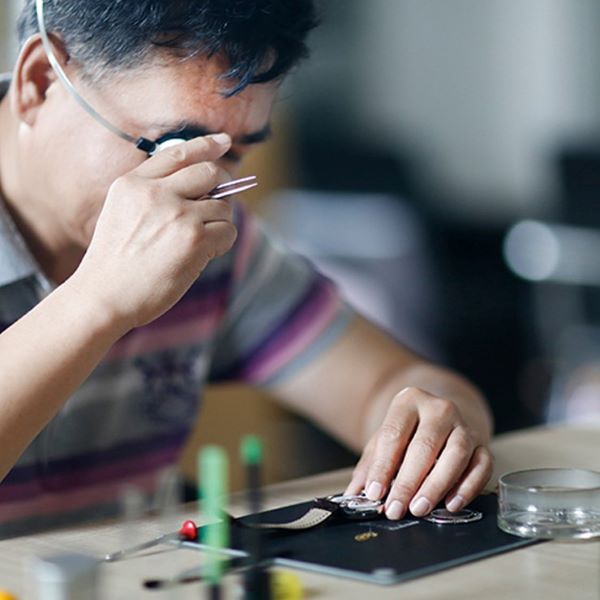Unique Craft
Heritage builds classics, innovation leads the future.
Every feature developed, every movement designed is the culmination of Seagull's dedication. With exquisitely crafted movements, stable performance products, and elegant designs, Seagull showcases its unwavering commitment to classic heritage. At the same time, Seagull continues to innovate with a new generation of in-house movements, led by tourbillon wristwatches, to inherit and build classics while leading the future with innovation.
Chinese lacquer
Natural lacquer

Selecting the tiger head as a design element, the natural lacquer dial cleverly incorporates a tourbillon mechanism at the wide-open mouth of the tiger. The tiger head pattern simplifies the image of a seagull spreading its wings, while the tiger's nose adopts elements of ingots. The entire tiger head exudes a sense of vigor and righteousness in its appearance, with special vermilion lacquer used to accentuate its eyes, emitting a resolute glow.
Bronze carving with gold inlay
Hand-carved, traditional gold inlay craftsmanship

The production of bronze sculptures typically involves several important processes such as metal smelting, forging, carving, gold inlaying, polishing, and applying red color. The developmental journey of bronze sculpture culture has witnessed the development of Chinese national culture, fully showcasing the profoundness of Chinese culture. Gold inlaying refers to a technique of embedding metal wires, usually gold or silver, into the surface of objects to form patterns or characters. The craft of gold inlaying is part of China's intangible cultural heritage, representing one of the ancient and complex metalworking decorative techniques unique to China. The process of gold inlaying requires meticulous carving and precision, and is intricate and time-consuming. Even today, there are very few masters who have mastered the art of gold inlaying.
Embroidery
Suzhou embroidery and Shu embroidery

Shu embroidery has a long history and dates back to Sanxingdui Civilization in ancient Shu. As one of the four famous embroiders, Shu embroidery is famous for its round, thick, colorful and three-dimensional images, and is recognized as a national intangible cultural anomaly. The ancients described Shu embroidery with "fine needles and threads, the thread stops one or two threads, and the needle is as thin as hair, and the embroidery of flowers and birds is not so fine and cannot be worked and cannot be true", and even compared the embroidery work to the painting work, called "painting embroidery" - with heavy silk brocade as paper, with a needle as a ghost pen, and with colored silk threads as pigments.
Enamel
Intangible cultural heritage technology

Once reserved for imperial courts, this exquisite craft involves meticulous coordination between painting and hand-firing techniques, resulting in pieces that exude the warmth of jade and the brilliance of jewels. Despite the passage of centuries, their colors remain as vibrant as ever. The artistry of cloisonné, micro-painted enamel, and champlevé enamel, applied to a select few high-end custom timepieces, requires dozens or even hundreds of firings and coolings to achieve perfection. Each enamel dial is thus unique, a testament to the painstaking craftsmanship involved.
Filigree
Silver, intangible heritage technology

The art of filigree dates back to the Spring and Autumn period but reached its peak during the Ming and Qing dynasties, earning its place as one of the eight marvels of Yanjing. Combining traditional craftsmanship with delicate floral motifs, it showcases rich cultural heritage and elegance, with silver threads weaving intricate patterns like blossoms captured in time. Seagull, inheriting this Chinese treasure, employs pure silver threads, each measuring just 0.02 millimeters in diameter—equivalent to the thickness of a strand of hair. These threads are meticulously embedded and layered onto the dial. Due to its complexity, filigree work was often reserved for royal use in ancient China. Seagull's master watchmakers, with extraordinary creativity and skill, have transformed this intangible cultural heritage into contemporary treasures imbued with vitality, showcasing captivating artistry and profound symbolism.









